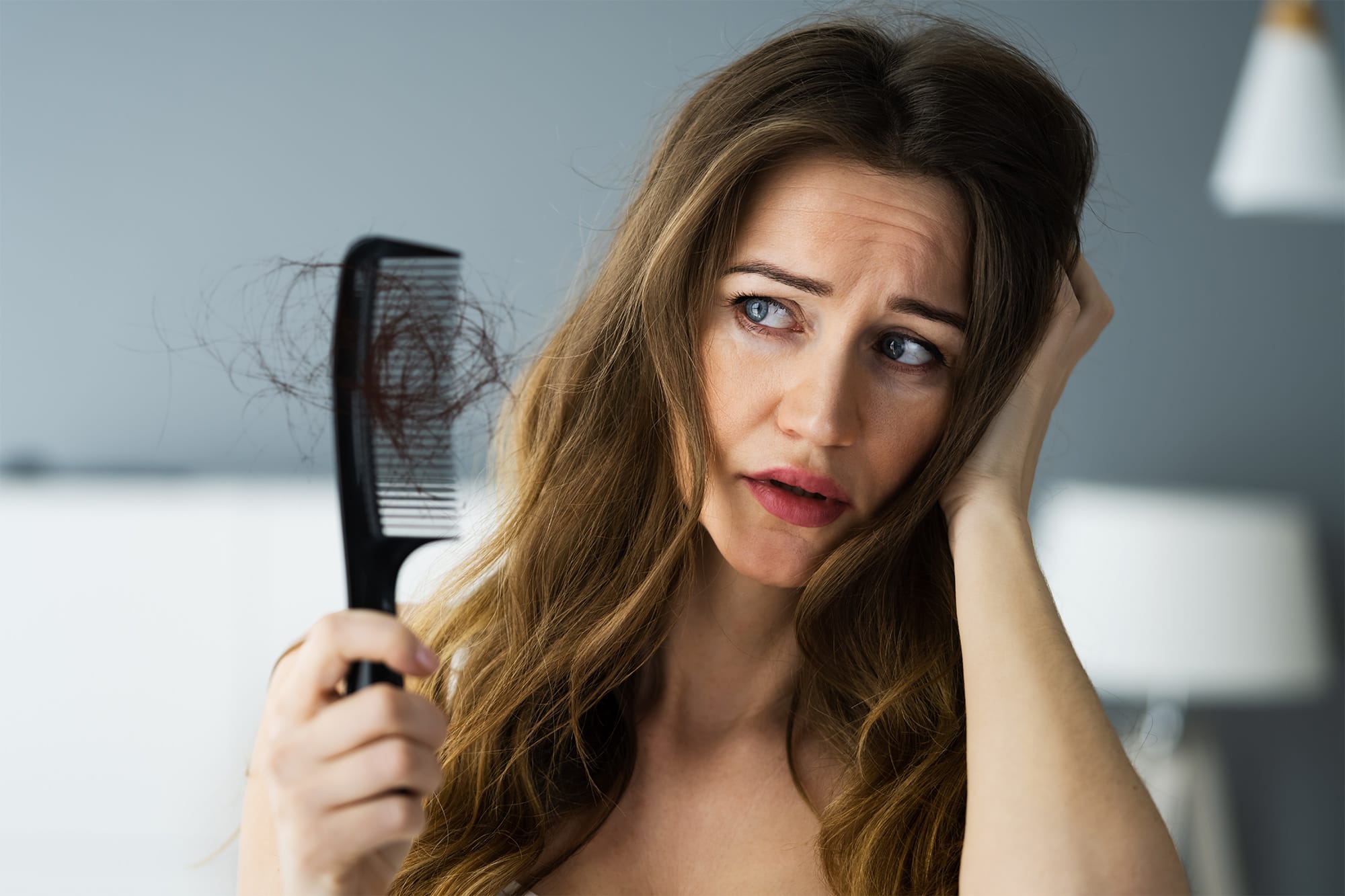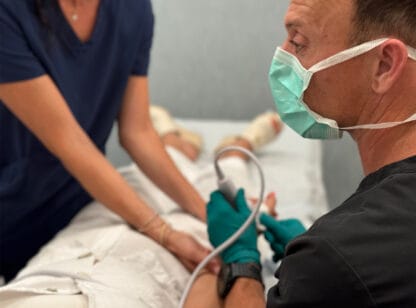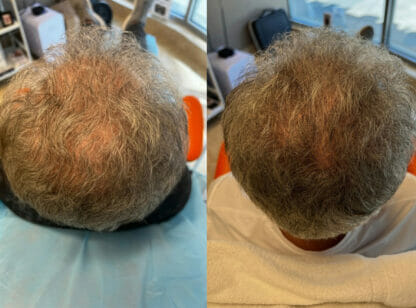Hair loss is a common and challenging condition affecting millions worldwide. Hair loss is often associated with aging, however, other factors including genetics, hormonal changes, stress and illness can contribute to hair loss at any age. The condition can occur in stages and result in different types of hair thinning and baldness.
The impact of COVID on hair loss
The global pandemic added another layer to this problem. COVID has been linked to significant hair shedding for many, including younger adults and children. Research has increasingly shown that COVID can lead to telogen effluvium,1 a type of hair loss where a significant number of hairs prematurely enter the shedding phase of the hair growth cycle. The stress of illness, coupled with the body’s focus on fighting off the virus, diverts resources away from non-essential functions like hair growth. This condition typically begins two to three months after recovering from COVID and can last for several months.1
Common causes of hair loss2
Androgenic alopecia, commonly known as male or female pattern baldness, is the most prevalent cause of hair loss, affecting millions in the U.S. It is primarily driven by genetic factors and hormonal changes, particularly an increased sensitivity to dihydrotestosterone (DHT). In men, it typically manifests as thinning at the temples and crown, eventually leading to baldness. In women, hair loss usually affects the crown and frontal hairline.
Hormonal changes. Hormonal fluctuations are another significant contributor, particularly in women. Conditions such as pregnancy, childbirth and menopause can lead to temporary or permanent hair thinning. The drop in estrogen levels during menopause can accelerate hair loss and change the density of the hair itself.
Medical conditions and treatments. Certain medical conditions such as thyroid disease and iron deficiency anemia can lead to hair loss. Cancer treatments like chemotherapy are well-known for causing rapid hair shedding due to their effects on rapidly dividing cells, including hair follicles.
High stress levels and nutritional deficiencies. High stress levels and inadequate nutrition, particularly deficiencies in iron, protein, biotin or zinc, can also trigger temporary hair loss which can become chronic if the underlying issues are not addressed.
Due to these varying factors, diagnosing the specific cause of hair loss is important to implement the appropriate treatment plan. The effectiveness of treatments varies widely among individuals. The most commonly used are minoxidil (Rogaine) and finasteride (Propecia). Minoxidil is a topical solution that helps stimulate hair growth and slow down hair loss and is available over-the-counter. Finasteride is an oral medication that works by reducing DHT levels. It is approved for use in men, but not recommended for women, especially those of childbearing age, due to potential side effects. Both medications demonstrate efficacy, particularly when treatment is started early. However, they both must be continued indefinitely to maintain results as stopping often leads to the resumption of hair loss.
Regenerative approaches to hair restoration
Low-level laser therapy (LLLT)/red light therapy: LLLT, often referred to as red light therapy when using red wavelengths, involves the use of specific wavelengths of light (typically 630 to 1100 nanometers) to penetrate the scalp and stimulate hair follicles. This non-invasive treatment is FDA-approved for treating hair loss in both men and women and studies show that it can increase hair density and thickness, making it a promising option for those looking to combat hair thinning. The type of red light used in LLLT is specifically designed to stimulate hair growth, which differs from red light therapies used for other purposes, such as skin treatments.3
Microneedling with exosomes: Microneedling involves using fine needles to create micro-channels on the scalp, which stimulates the body’s natural healing process. When combined with exosomes—tiny vesicles derived from stem cells that promote cell communication—this treatment can significantly enhance hair growth by activating dormant hair follicles and improving scalp health.4
Platelet-rich plasma (PRP) therapy: PRP uses concentrated platelets derived from the patient’s own blood and injected into the scalp. Platelets contain growth factors that can stimulate hair growth and improve hair density. PRP is often used in combination with other treatments like microneedling for enhanced results.4
NeoGraft FUE (follicular unit extraction): This advanced hair transplantation technique uses FUE to harvest hair follicles individually from areas of the scalp where there is more density, and transfer them to balding areas. The minimally invasive procedure leaves no linear scars and offers a more natural-looking hairline compared to traditional methods.5
Hair loss can be challenging, but understanding its causes and exploring available treatment options can be empowering. Consulting with a specialized medical professional is essential to determine the best course of treatment tailored to your individual needs to achieve a fuller, healthier head of hair.
Dr. Sandhu is founder and CEO of Amara Regenerative Aesthetics; a Diplomate, American Board of Internal Medicine; and Member, Board of Anti-Aging Medicine and the American Board of Aesthetics Medicine. She can be reached at (760) 895.4140. For more information visit www.AmaraRA.com.
References available upon request.













































Comments (0)